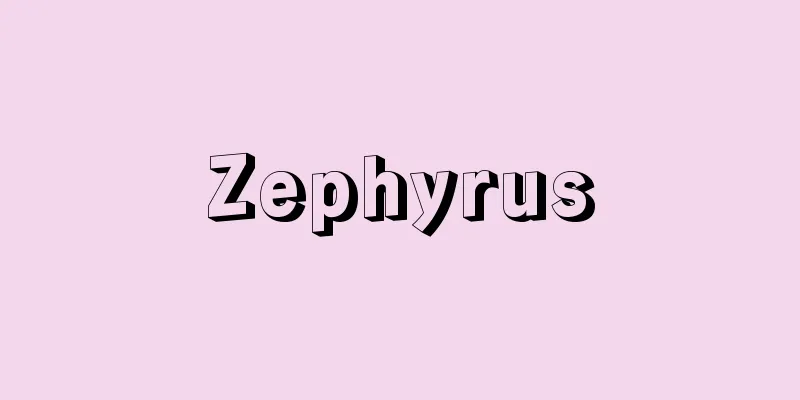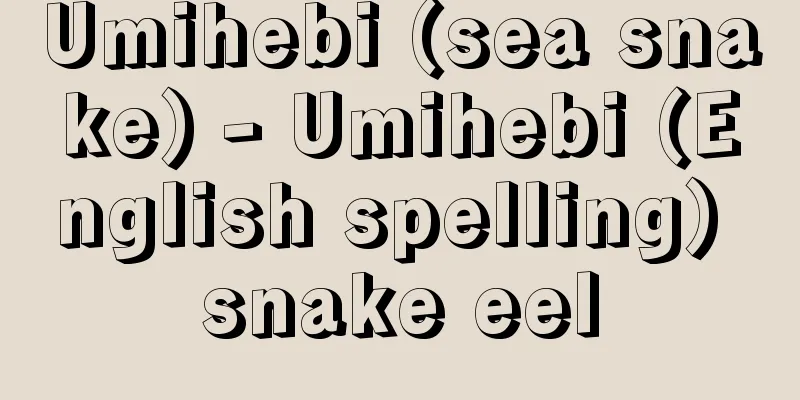Seito - Seito

|
A literary magazine for women. Six volumes and 52 issues. Founded in September 1911 (Meiji 44) by Hiratsuka Raicho at the recommendation of Ikuta Choko, and ceased publication in February 1916 (Taisho 5). Published by Seitosha. In addition to Raicho, other founders included Yasumochi Yoshiko, Nakano Hatsuko, Mozume Kazuko, and Kinouchi Teiko. The magazine was named by Choko after the women who advocated for women's rights in British salons in the mid-18th century, who were called blue stockings. The cover was designed by Naganuma (Takamura) Chieko. It was launched as Japan's first women's magazine, and had well-known literary women such as Yosano Akiko, Hasegawa Shigure, and Mori Shige as supporting members, and many other employees, including Iwano Kiyoko, Chino Masako, Ojima Kikuko, Kato Midori, Tamura Toshiko, Nogami Yaeko, and Mizuno Senko. The first issue of volume 1, which featured Yosano Akiko's opening poem "If only I could write in the first person, I am a woman," and the inaugural message of Raicho, which begins with "In the beginning, women were the sun," stated in the first article of the company rules that "Our goal is to promote the development of women's literature, to enable each individual to demonstrate their natural talents, and to one day give birth to a female genius." It was heavily influenced by Shirakaba, which had been launched the previous year, and the number of staff members continued to grow, including Okamoto Kanoko, Senuma Kayo, Ito Noe, Kamichika Ichiko, and Yamada Waka. However, it was not yet an era ripe for the production of women's literature. With successive bans, visits to brothels by some staff members such as Otake Beniyoshi, and drinking incidents being treated as the Yoshiwara Climbing Incident and the Goshiki no Sake Incident, interest in women's issues grew amid growing criticism and ridicule of the new women, and the magazine even became a base for the women's liberation movement. In January 1915, Ito Noe took over as editor from Raicho, and the magazine went from being a staff-run magazine to being personally led, and issues such as women's independence, chastity, abortion, and public prostitution were raised one after another. When Noe returned home to give birth, Ikuta Hanayo took over as editor for a time, but after she moved to Tokyo, the magazine was discontinued due to a love affair in which Noe ran off to Osugi Sakae, and the Osugi stabbing incident involving Kamichika Ichiko. A reprint (1980, Fuji Publishing) has been published. [Akiko Ogata] "In the Beginning, Women Were the Sun: Hiratsuka Raicho's Autobiography, Volumes 1 and 2 (1971, Otsuki Shoten)" ▽ "Seito by Ide Fumiko (1961, Kobundo)" Source: Shogakukan Encyclopedia Nipponica About Encyclopedia Nipponica Information | Legend |
|
女流文芸雑誌。六巻52冊。生田長江(いくたちょうこう)の勧めで平塚らいてうにより1911年(明治44)9月創刊、16年(大正5)2月廃刊。青鞜社発行。発起人はらいてうのほか保持研子(やすもちよしこ)、中野初子、物集(もずめ)和子、木内錠子(ていこ)。誌名は、18世紀なかばイギリスのサロンで女権を唱えた女性たちがblue stockingとよばれたのにちなんで長江が命名。表紙は長沼(高村)智恵子(ちえこ)による。わが国初の女性雑誌として発足し、与謝野晶子(よさのあきこ)、長谷川時雨(はせがわしぐれ)、森しげ等、文壇知名婦人を賛助員とし、岩野清子、茅野雅子(ちのまさこ)、尾島菊子、加藤みどり、田村俊子(としこ)、野上八重子(弥生子(やえこ))、水野仙子ら多数の社員を集めた。「一人称にてのみもの書かばや/われは女(おなご)ぞ」の与謝野晶子の巻頭詩、「元始女性は太陽であつた」と始まるらいてうの創刊の辞を掲げた1巻1号は、社則第1条に「女流文学の発達を計り、各自天賦の特性を発揮せしめ、他日女流の天才を生まむ事を目的とす」と記した。前年創刊された『白樺(しらかば)』の影響が濃いが、岡本かの子、瀬沼夏葉(せぬまかよう)、伊藤野枝(のえ)、神近市子(かみちかいちこ)、山田わか等、社員は増え続けた。しかし、女流文学を生み出すにはいまだ熟さない時代だった。相次ぐ発禁処分、尾竹紅吉(べによし)ら一部社員による遊廓(ゆうかく)見学、飲酒が吉原登楼事件、五色の酒事件などとして扱われ、新しい女に対する批判嘲笑(ちょうしょう)が高まるなかで女性問題に関心が集まり、婦人解放運動の一拠点とさえなっていく。1915年1月からは伊藤野枝がらいてうから編集を引き継ぎ、社員制から個人主宰とし、婦人の自立、貞操、堕胎、公娼(こうしょう)問題などが次々に提起される。出産のため帰郷した野枝にかわって一時生田花世が編集するが、上京後野枝が大杉栄のもとに走るなどの恋愛事件、神近市子の大杉刺傷事件のなかで廃刊となる。復刻版(1980・不二出版)がある。 [尾形明子] 『『元始、女性は太陽であった――平塚らいてう自伝』上下(1971・大月書店)』▽『井手文子著『青鞜』(1961・弘文堂)』 出典 小学館 日本大百科全書(ニッポニカ)日本大百科全書(ニッポニカ)について 情報 | 凡例 |
<<: Political party - Seito (English spelling)
Recommend
Hanagoke - Hanagoke
A type of lichen in the family Polytrichum. Found...
Gürsel, C.
…In response to this, discontent grew among city ...
Eiho Nagao - Eiyu Eiho
...A Zen monk and kyoka poet from the Azuchi-Momo...
Tiruchirapalli
A city on the right bank of the Cauvery River in c...
Lachenalia bulbifera (English spelling)
…[Tora Saburo Kawabata]. … *Some of the terminolo...
Hanga (print)
A form of painting expressed indirectly by printi...
Ka-row irregular conjugation - Kagyouhenkakukatsuyo
One of the conjugation forms of verbs. The word fo...
Atsushio [Hot spring] - Atsushio
...A village in Yama District, northwest of Fukus...
Clothing and hat - Ehatsu
〘Noun〙 Buddhist term. ① (Abbreviation of "san...
Saga Domain
Also called Hizen Domain. A large outside domain ...
larch
...It has local names such as Fujimatsu (illustra...
Vascular grafting
A blood vessel transplant is used to repair a miss...
Wolff, B.
… In the following 18th century, poets and writer...
Jan Toorop
1858‐1928 Dutch painter. His full name was Johanne...
Air bubbles - Air bubbles
...Added to a solution or raw material to form st...









